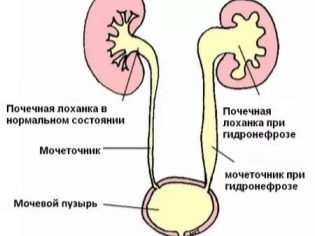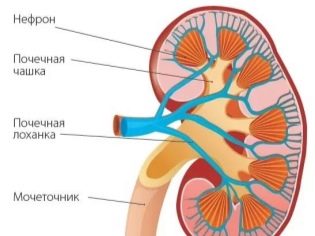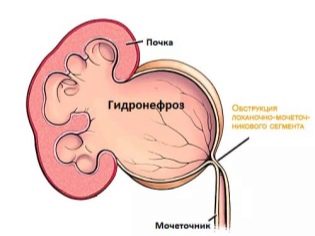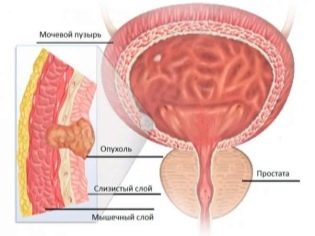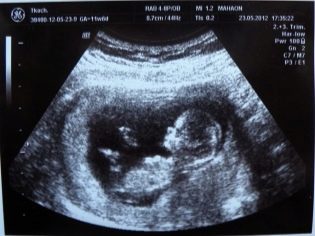Enlarged pelvis kidney in a child: causes and treatment
Usually, the expansion of the pelvis-pelvis system in children develops asymptomatically and is detected during the ultrasound examination. These pathologies can occur with various complications and require adequate treatment.
What it is?
A disease in which the renal pelvis is enlarged and enlarged is called pyeloectasia. It is quite common in pediatric urological practice. A routine clinical examination in a child does not contribute to the detection of this clinical sign. To establish the diagnosis is possible only after conducting auxiliary diagnostic studies.
The pelvis is a structural anatomical element of the kidney. Normally, it is needed for removing urine.
In the composition of the pelvis is a large and small cups. In their cavity, urine accumulates, to subsequently flow into the urinary tract through the ureter.
Various provoking factors can lead to the development of an increase in pelvis. In some cases, the condition may be congenital. The first urinary disorders in this situation occur already in a newborn baby or a baby. Pathology can be at the left kidney, and right. In some cases, there is expansion of the renal pelvis system of both kidneys.
This condition is isolated and not dangerous. It can only cause some adverse effects in the child. In the presence of concomitant diseases of the urinary system, the presence of pyeloectasia significantly worsens the course of the disease in the future. Often this leads to urinary disorders and functional malfunction of the kidneys.
Norm
The sizes of the pelvis in babies vary and depend on age. There are special age tables of normal values that allow doctors to identify deviations from the norm during ultrasound. So, the size of the cup pelvis system in a baby at 1 month will be significantly less than that of a child at 4 years old.
Normally, the pelvis has a funnel shape with a slit-like opening for passing urine. Modern diagnostic methods allow to determine its size even during pregnancy. Usually, it is possible to measure the parameters of the pelvis-pelvis system already at week 16-18 of the intrauterine development of a baby.. This is achieved by using high-resolution ultrasound.
Usually in a newborn baby, the size of the renal pelvis does not exceed 10 mm. On average, it is ½ cm. The size of the pelvis of a girl may differ slightly from those of boys. The open form of the body is needed for the discharge of urine into the ureter. As the child grows, the size of the pelvis increases. With the increase of these indicators they talk about child pyeloectasia.
Factors
There are several reasons for the development of this condition in babies. If signs of expansion were identified during the mother’s pregnancy or immediately after birth, then they say that congenital pyelectasis is present. This condition is more common in those moms who have different pathologies during gestation or suffer from chronic kidney disease.
Among the most common causes leading to the development of pyeloectasia in a child are the following:
- Various anatomical defects in the structure of the ureter. These pathologies contribute to the physiological removal of urine and provoke the expansion of the pelvis.Violation of urination contributes to the development of arterial hypotension in the child in the future.
- Bladder dysfunction. May be caused by various reasons. Often manifested in the form of impaired urination. In this condition, the total amount of excreted urine increases, and the urge to urinate significantly increases.
- Various neoplasms and barriers in the urinary tract for removing urine. Most often, tumors or cysts that substantially overlap the lumen of the urinary tract lead to this. These conditions contribute to the accumulation of urine, which leads to a pronounced expansion of the pelvis.
- Excessive accumulation of fluid inside the body. This condition occurs when various diseases of internal organs, which are characterized by a tendency to the formation of edema. It can also be a manifestation of problems in the work of the heart and blood vessels.
- Infectious diseases. Many bacterial infections, rapidly spreading through the body, with the blood flow to the kidneys and urinary tract. Getting into these organs, they cause a strong inflammatory process there. The consequence of this condition is a violation of urine excretion. Long-lasting and chronic bacterial infections often become causes of persistent pyeloectasia.
- Muscle weakness of the urogenital area. This condition is characteristic of premature babies. In such babies, the intrauterine organogenesis is disturbed. The longer the period of prematurity, the higher the risk of developing pyeloectasia and kidney diseases in a child in the future.
Symptoms
Most children pyeloectasia is asymptomatic. Typically, such forms account for more than 75% of cases.
Asymptomatic flow is also characteristic of the early stages of the expansion of the pyeo-pelvis-plating system, when there are no functional impairments.
In the later stages of the disease appear adverse symptoms.
The most characteristic signs of expansion include various urinary disorders. At the same time portions of urine can change. Some diseases cause the child to have a strong and frequent urge to urinate. If the baby began to often wake up in the middle of the night and run to the toilet, then this should alert the parents and motivate them to consult the pediatric urologist for consultation with the child.
Bacterial diseases of the kidneys can occur with fever and symptoms of intoxication. Accompanying them as a violation of urination. In some cases, the child appears sore during the visit to the toilet. Severe course of the disease is accompanied by a change in the behavior of the baby. He becomes more capricious, lethargic and apathetic.
Diagnostics
The main diagnostic method to accurately establish the diagnosis is ultrasound of the kidneys. This study in children can be carried out from the first months after birth. Ultrasound does not bring the child any pain and discomfort.
During the study, the doctor will be able to identify all the existing deviations in the structure of the kidneys and urinary tract. Using ultrasound, you can make a description of the size and structure of the pelvis, as well as determine the amount of residual urine. On average, 15–20 minutes is enough for a study.
Ultrasound examination of the kidneys and excretory tract follows all babies with predisposing risk factors.
In difficult clinical cases, doctors resort to the appointment of an MRI. With this method, you can also get a very accurate description of the structure and size of all the anatomical components of the kidneys. The study has a number of contraindications and is carried out for differential diagnosis. A significant disadvantage of this test is the high cost.
To assess the functional disorders of the kidneys assigned to the general analysis of urine. This simple and routine test allows you to establish basic kidney performance.To identify kidney failure, you need to know the level of creatinine. The excess of this indicator above the age norm indicates the presence of serious problems in the kidneys and the entire urinary system.
Treatment
Detection of signs of an enlarged renal pelvis in a child should in no way lead parents to horror. This condition is often recorded in children's practice.
If pyeloectasia is detected during the period of prenatal development of the baby, then expectant tactics are used.
In this case, obstetricians and gynecologists during the whole pregnancy control the growth and development of the fetus in order to prevent it from developing complications or physiological pathologies.
Usually babies up to three years also do not have specialized treatment without special indications. So, if there are no significant functional disorders in urine excretion, then therapy is not required. Monitoring the condition of the child is carried out by a pediatric urologist or nephrologist. Usually, a baby with pyeloectasia should visit a doctor at least once a year.
In the presence of inflammatory diseases of the kidneys, accompanied by signs of expansion of the renal pelvis system, the appointment of symptomatic therapy is required. Diuretic drugs are used to improve urine excretion. The course or regular use of them contributes to the improvement of urination. They also improve kidney function and help prevent dangerous complications.
If during the diagnostics in the urine, bacteria were identified that provoked the appearance of pyeloectasia, then a scheme of conservative treatment is prescribed. It necessarily involves the appointment of antibacterial drugs. Usually such drugs are prescribed for 10-14 days. After the test, a second urine bacterus is taken to establish the effect of the therapy performed.
If tumor formation or cysts are the cause of pyeloectasia, then surgical treatment is often required.
The decision on the operation remains with the urologist. It is he who decides the need to perform surgical treatment. Usually such operations are performed in children at an older age. After the operation, the babies remain in the dispensary at the urologist for several years.
About what pyeloectasia is and what complications it can lead to, see the following video.

